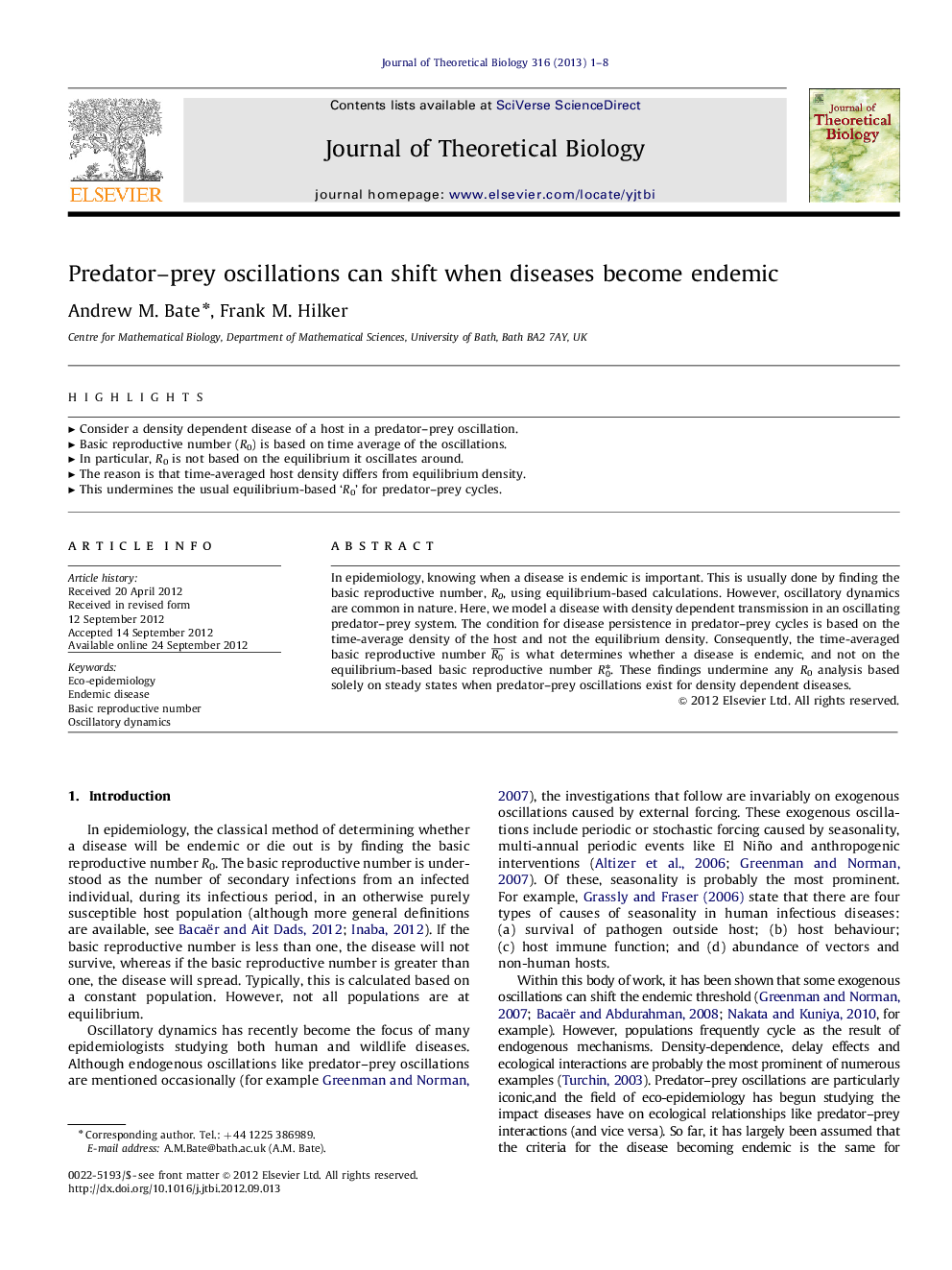| Article ID | Journal | Published Year | Pages | File Type |
|---|---|---|---|---|
| 4496566 | Journal of Theoretical Biology | 2013 | 8 Pages |
In epidemiology, knowing when a disease is endemic is important. This is usually done by finding the basic reproductive number, R0, using equilibrium-based calculations. However, oscillatory dynamics are common in nature. Here, we model a disease with density dependent transmission in an oscillating predator–prey system. The condition for disease persistence in predator–prey cycles is based on the time-average density of the host and not the equilibrium density. Consequently, the time-averaged basic reproductive number R0¯ is what determines whether a disease is endemic, and not on the equilibrium-based basic reproductive number R0⁎. These findings undermine any R0 analysis based solely on steady states when predator–prey oscillations exist for density dependent diseases.
► Consider a density dependent disease of a host in a predator–prey oscillation. ► Basic reproductive number (R0) is based on time average of the oscillations. ► In particular, R0 is not based on the equilibrium it oscillates around. ► The reason is that time-averaged host density differs from equilibrium density. ► This undermines the usual equilibrium-based ‘R0’ for predator–prey cycles.
